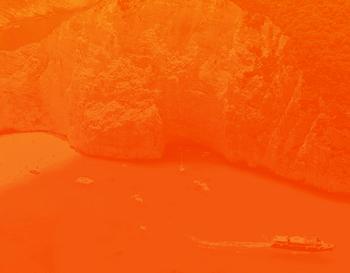The Hypogeum, or underground cavity, is a unique monument and a splendid example of architecture in the negative. It was discovered accidentally in 1902 by a stone mason who was laying the foundations of some houses.
A Jesuit priest, Father Magri S.J., was appointed to report on the underground remains. However in 1907, he was sent on mission work to Sfax, Tunisia, and while there he passed away. Unfortunately, his reports of this early, critical work in the unearthing the Hypogeum have never been found.
The next person to assume responsibility for the excavation, was Temi Zammit, the first Director of Malta's Museum's Department and a distinguished professor of Medicine Sir Temi was later knighted for his contribution to medical science. His excavation yielded a wealth of archaeological material including much pottery and human bones, personal ornaments such as beads and amulets, little carved animals and larger figurines.
It appears that the site was first in use around 3600 BC when some natural cavities were used as a repository for the bones of the dead. As the cavities filled up, new chambers were cut progressively deeper into the rock. Parts of the cavern system were skilfully carved in a clear imitation of the temple architecture built above ground. It has been calculated that around 7,000 persons were buried there, century after century.
The Hypogeum consists of halls, chambers and passages hewn out of the living rock and covering some 500m². The rock-cut chambers are of a diverse shapes and sizes and finished to different standards of workmanship. The complex is grouped in three levels - the upper level (3600-3300 BC), the middle level (3300-3000 BC), and the lower level (3000-2400 BC). The deepest room in the lower level is 10.6 metres under road surface.
The upper level consists of a large hollow with a central passage and burial chambers cut on each side. One of the chambers still contains original burial deposits. The middle level consists of various chambers very smoothly finished, which give the impression of built masonry. The workmanship is all the more impressive when you consider that the chambers were meticulously carved using only flint and stone tools. Curvilinear and spiral paintings in red ochre are still visible in some areas. One of the niches in the 'Oracle Chamber' has the characteristic of echoing deep sounds. The carved façade is simply magnificent.
This unique monument is now enshrined in the UNESCO World Heritage list. To ensure its conservation, the site's microclimate is strictly regulated: temperature, relative humidity and carbon dioxide levels are constantly monitored to ensure the Hypogeum's survival for future generations.
A tour of the site starts with a brief introductory exhibition and multilingual audio-visual film focusing on the temple building peoples and the Hypogeum's relationship to Malta's overground temple sites. The Hypogeum continues to baffle the casual visitor and scholar alike, but the problems of its interpretation simply add to its mystery and to the powerful feeling of religious awe that this remarkable monument inspires.


Similar Topics
-
Tarxien Temples near Paola Malta
Posted by Sliema2 in Malta and Gozo Discussion Forum
-
Hypogeum
Posted by Helenllama in Malta and Gozo Discussion Forum
-
Hal Saflineni Hypogeum
Posted by PinkGlow in Malta and Gozo Discussion Forum
-
Thanks Gozomark - Hypogeum booking
Posted by linnyann in Malta and Gozo Discussion Forum
-
Hi from Malta
Posted by Glynis HT Admin in Malta and Gozo Discussion Forum
